Abstract
Experimental studies have recently demonstrated that fluorescence emission can be quenched by laser light pulses from modern high repetition rate lasers, a phenomenon we call "light quenching." We now describe the theory of light quenching and some of its effects on the steady-state and time-resolved intensity and anisotropy decays of fluorophores. Light quenching can decrease or increase the steady-state or time-zero anisotropy. Remarkably, the light quenching can break the usual z axis symmetry of the excited-state population, and the emission polarization can range from -1 to +1 under selected conditions. The measured anisotropy (or polarization) depends upon whether the observation axis is parallel or perpendicular to the propagation direction of the light quenching beam. The effects of light quenching are different for a single pulse, which results in both excitation and quenching, as compared with a time-delayed quenching pulse. Time-delayed light quenching pulses can result in step-like changes in the time-dependent intensity or anisotropy and are predicted to cause oscillations in the frequency-domain intensity and anisotropy decays. The increasing availability of pulsed laser sources offers the opportunity for a new class of two-pulse or multiple-pulse experiments where the sample is prepared by an excitation pulse, the excited state population is modified by the quenching pulse(s), followed by time- or frequency-domain measurements of the resulting emission.
Full text
PDF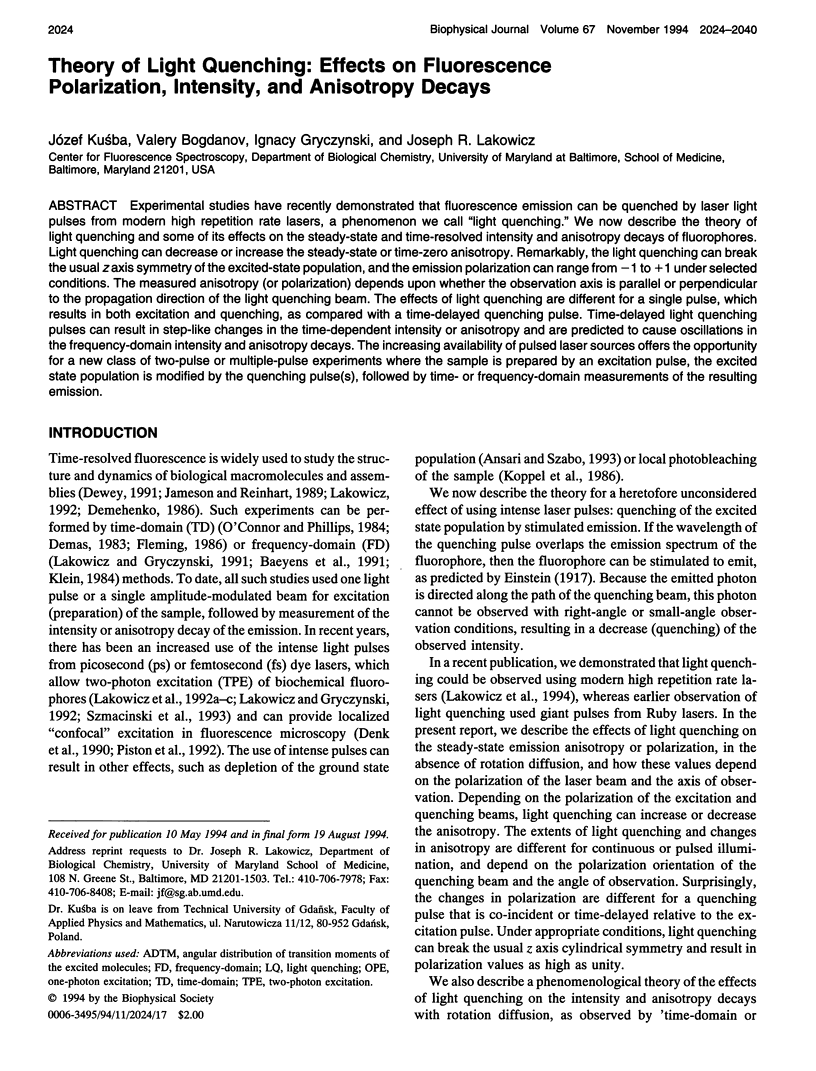
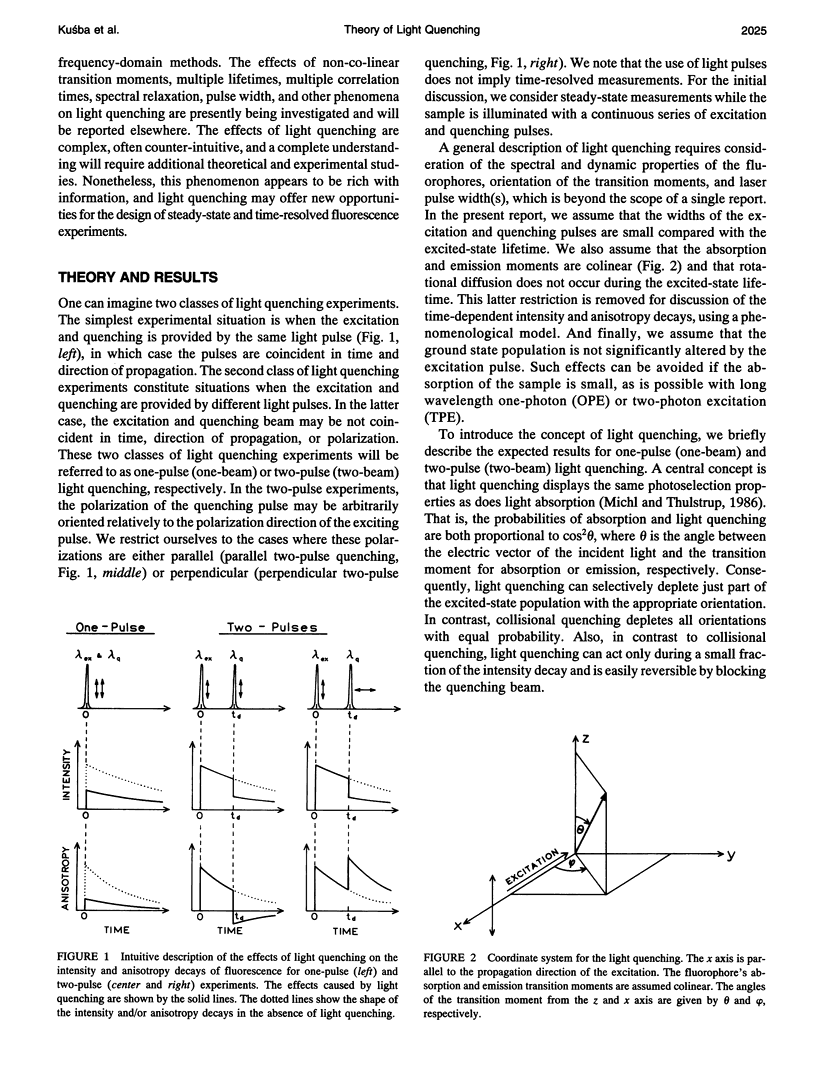
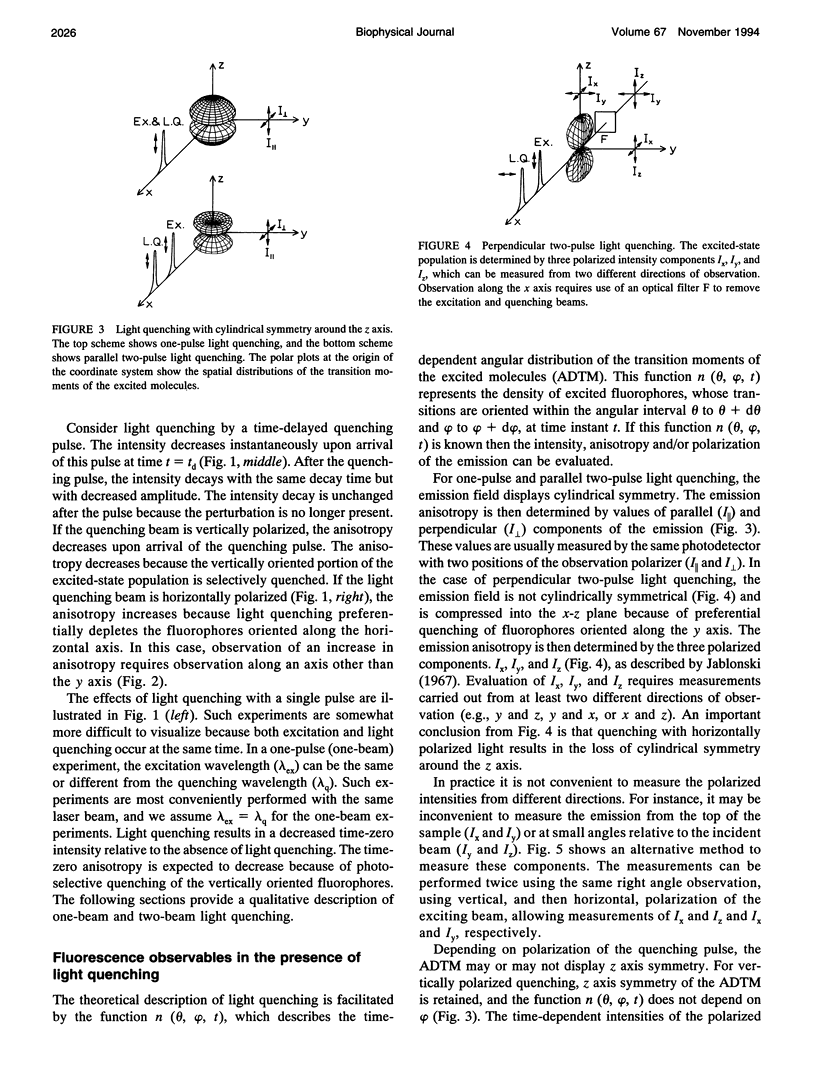


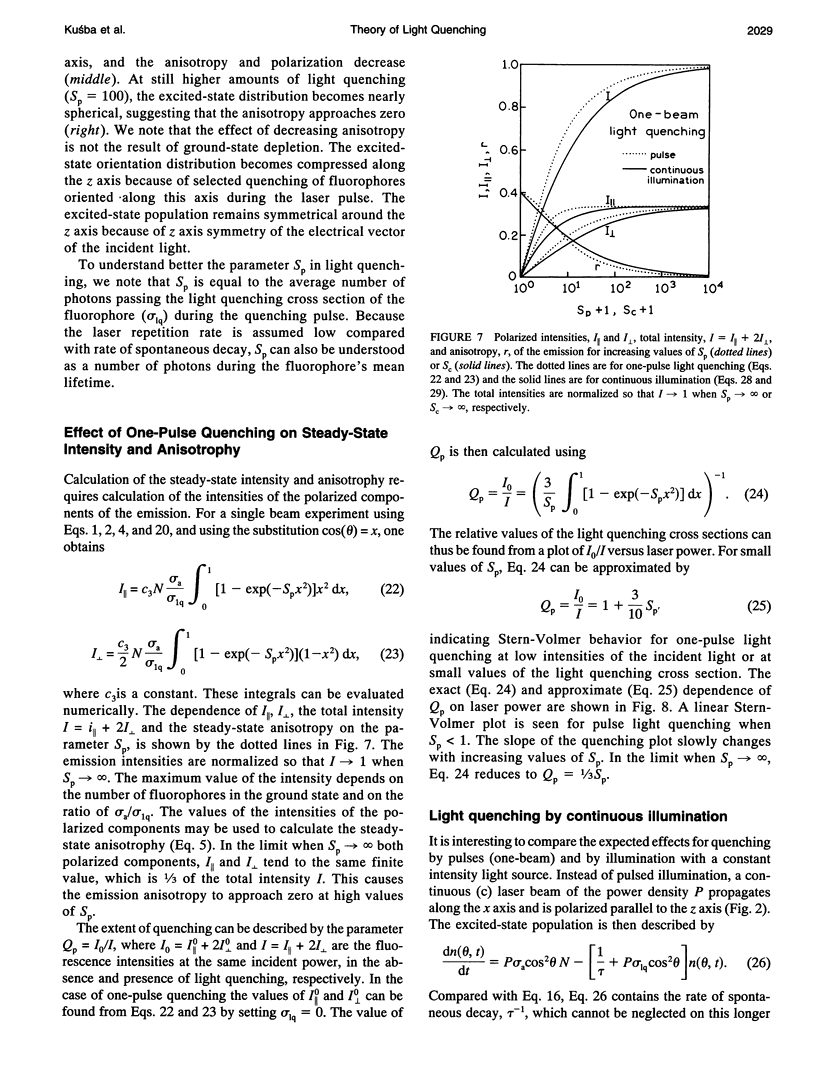
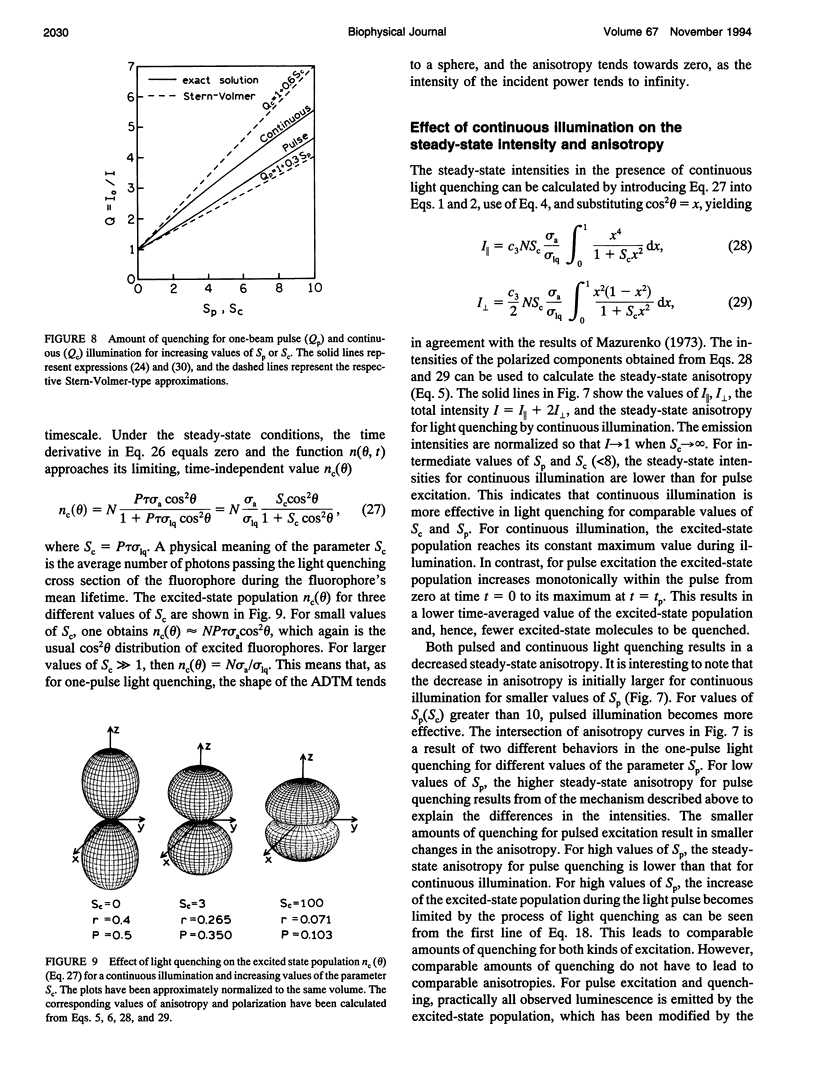
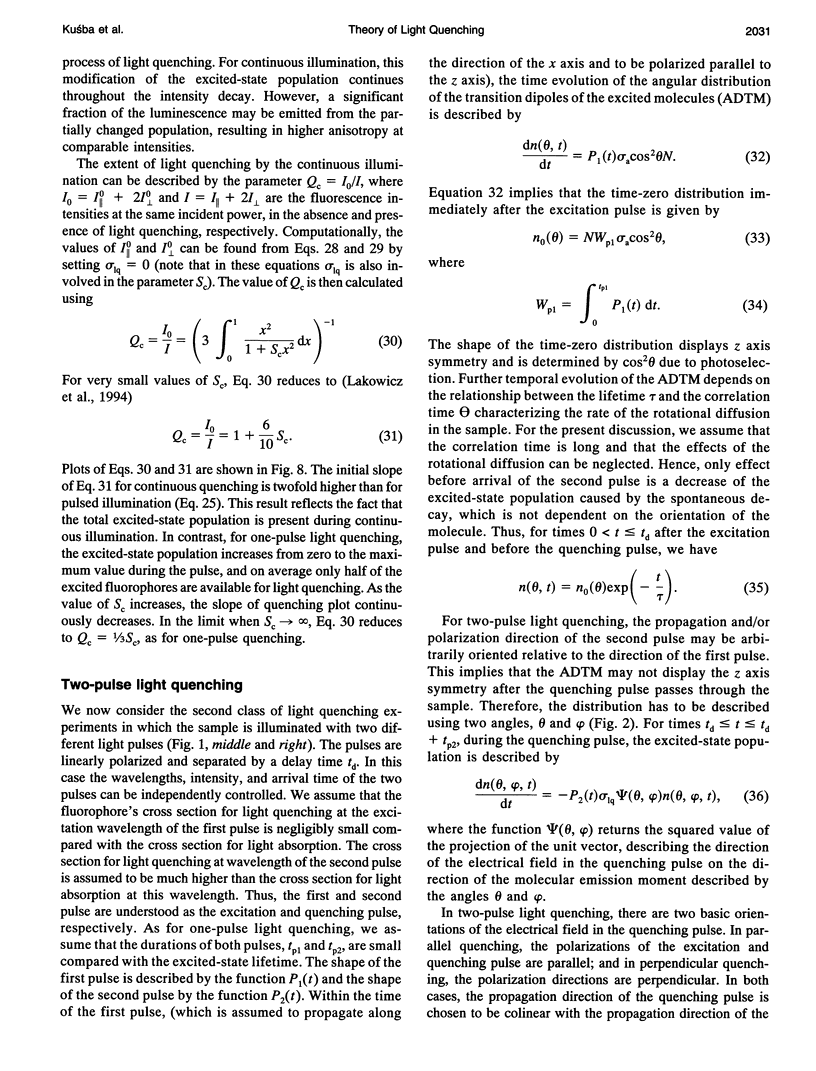
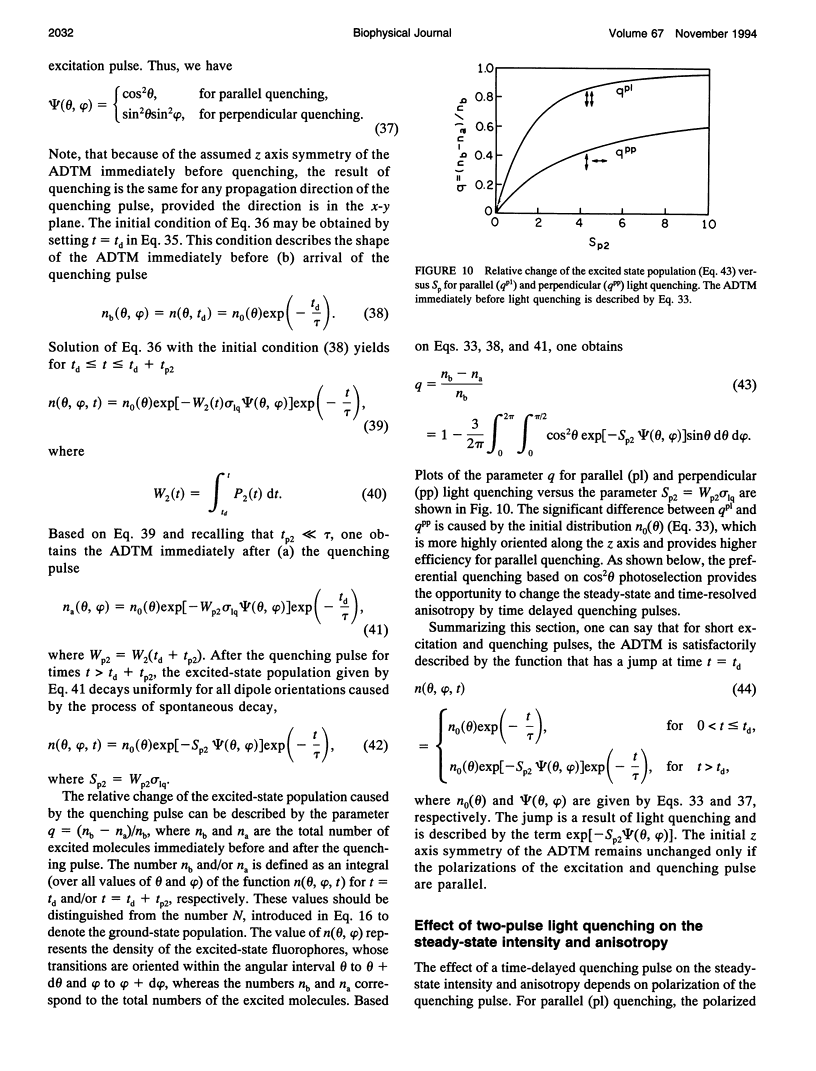


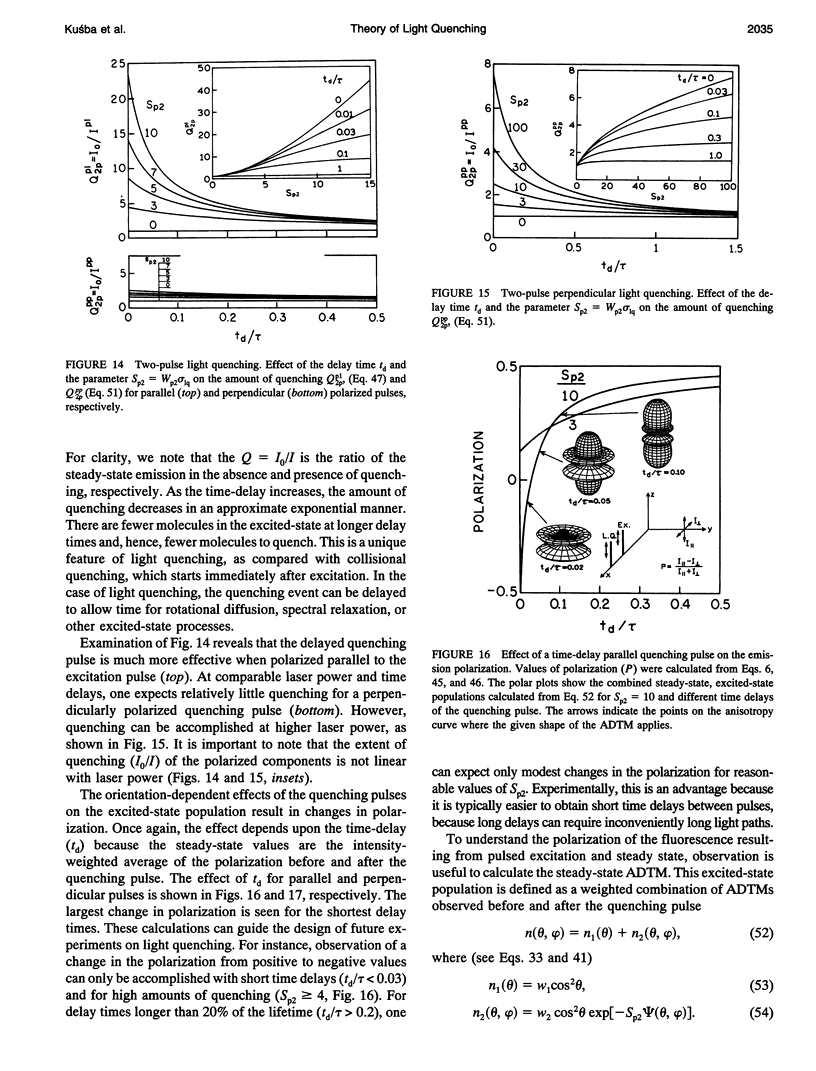




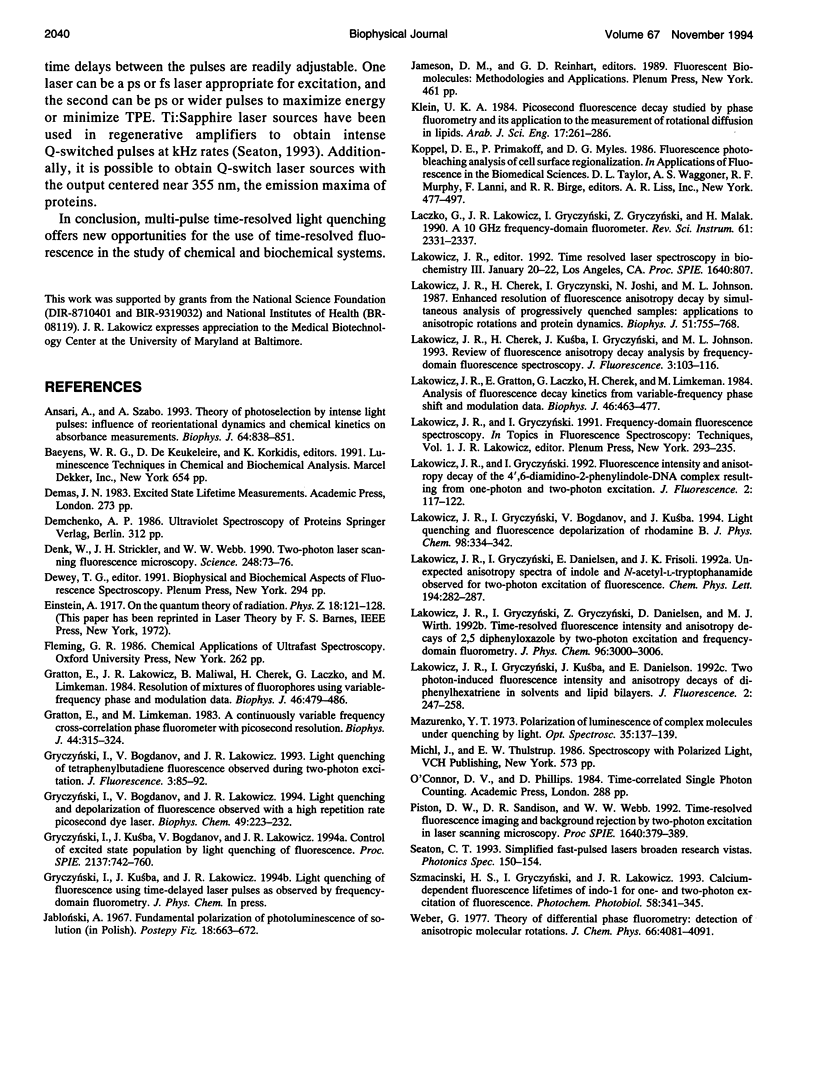
Selected References
These references are in PubMed. This may not be the complete list of references from this article.
- Ansari A., Szabo A. Theory of photoselection by intense light pulses. Influence of reorientational dynamics and chemical kinetics on absorbance measurements. Biophys J. 1993 Mar;64(3):838–851. doi: 10.1016/S0006-3495(93)81445-0. [DOI] [PMC free article] [PubMed] [Google Scholar]
- Denk W., Strickler J. H., Webb W. W. Two-photon laser scanning fluorescence microscopy. Science. 1990 Apr 6;248(4951):73–76. doi: 10.1126/science.2321027. [DOI] [PubMed] [Google Scholar]
- Gratton E., Limkeman M. A continuously variable frequency cross-correlation phase fluorometer with picosecond resolution. Biophys J. 1983 Dec;44(3):315–324. doi: 10.1016/S0006-3495(83)84305-7. [DOI] [PMC free article] [PubMed] [Google Scholar]
- Gratton E., Limkeman M., Lakowicz J. R., Maliwal B. P., Cherek H., Laczko G. Resolution of mixtures of fluorophores using variable-frequency phase and modulation data. Biophys J. 1984 Oct;46(4):479–486. doi: 10.1016/S0006-3495(84)84044-8. [DOI] [PMC free article] [PubMed] [Google Scholar]
- Gryczyński I., Bogdanov V., Lakowicz J. R. Light quenching and depolarization of fluorescence observed with laser pulses. A new experimental opportunity in time-resolved fluorescence spectroscopy. Biophys Chem. 1994 Apr;49(3):223–232. doi: 10.1016/0301-4622(93)e0072-d. [DOI] [PubMed] [Google Scholar]
- Lakowicz J. R., Cherek H., Gryczynski I., Joshi N., Johnson M. L. Enhanced resolution of fluorescence anisotropy decays by simultaneous analysis of progressively quenched samples. Applications to anisotropic rotations and to protein dynamics. Biophys J. 1987 May;51(5):755–768. doi: 10.1016/S0006-3495(87)83402-1. [DOI] [PMC free article] [PubMed] [Google Scholar]
- Lakowicz J. R., Laczko G., Cherek H., Gratton E., Limkeman M. Analysis of fluorescence decay kinetics from variable-frequency phase shift and modulation data. Biophys J. 1984 Oct;46(4):463–477. doi: 10.1016/S0006-3495(84)84043-6. [DOI] [PMC free article] [PubMed] [Google Scholar]
- Szmacinski H., Gryczynski I., Lakowicz J. R. Calcium-dependent fluorescence lifetimes of Indo-1 for one- and two-photon excitation of fluorescence. Photochem Photobiol. 1993 Sep;58(3):341–345. doi: 10.1111/j.1751-1097.1993.tb09571.x. [DOI] [PubMed] [Google Scholar]


